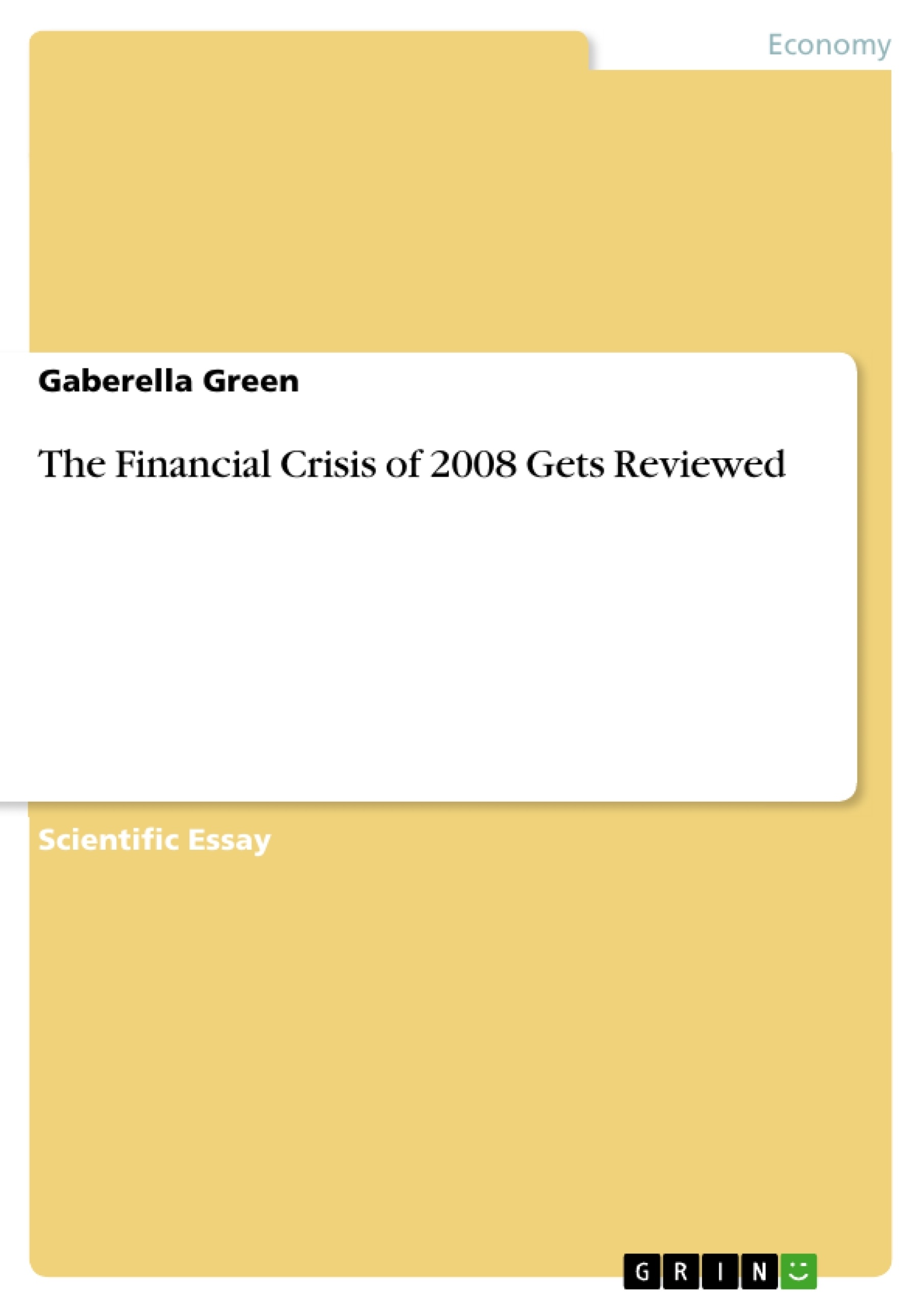There are numerous views for the financial crisis of 2008. The International Accounting Standards Board (IAS) responded to the financial crisis by amending IAS 39. A study found by provides light to the issue of whether or not the amendment to IAS 39 benefit U.S. banks. The financial crisis of 2008 consists of unfair accounting practices, poor regulation, too much emphasis on credit scores and various other reasons. One popular reason includes subprime mortgages which leave mortgage-backed assets frozen on the books of U.S. banks. This leads to write-downs for the financial assets. The IASB initiates change to alleviate the financial crisis by amending the IAS 39. The IAS 39 allows for reclassification and measurements of financial instruments. Firms are allowed to abandon fair value measurement in order to alleviate the mortgage-backed assets effects. Some firms abuse IAS 39 and contribute it to the financial crisis. Several well-known executives argue that using fair value accounting is the key to helping the financial crisis. One study found that the amendment to the IAS 39 is not helping U.S. firms, but assisting international banks. The benefits of IAS 39 gets weigh against the disadvantages.
Inhaltsverzeichnis (Table of Contents)
- Introduction
- Study Found that Fair value Accounting Causes Benefits and Costs
- The IASB Changes Financial Standards during the Financial Crisis of 2008
- Harmonization in Global Standards
- Reasons for the financial Crisis
- Additional Reasons that Contribute to the Financial Crisis
Zielsetzung und Themenschwerpunkte (Objectives and Key Themes)
This paper examines the financial crisis of 2008 and its impact on accounting practices, particularly focusing on the role of fair value accounting. The author explores the International Accounting Standards Board (IASB)'s response to the crisis by amending IAS 39, and analyzes the benefits and costs of these changes, particularly as they relate to U.S. banks.
- The financial crisis of 2008 and its causes, including subprime mortgages, unfair accounting practices, and poor regulation.
- The IASB's amendment to IAS 39, which allowed for reclassification and abandonment of fair value accounting.
- The impact of the IAS 39 amendment on U.S. banks and international banks.
- The need for harmonization in global accounting standards.
- The role of fair value accounting in the financial crisis.
Zusammenfassung der Kapitel (Chapter Summaries)
- Introduction: The introduction outlines the financial crisis of 2008, highlighting the role of subprime mortgages and the IASB's amendment to IAS 39 in response to the crisis.
- Study Found that Fair value Accounting Causes Benefits and Costs: This section discusses a study that found the amendment to IAS 39 did not fulfill its intended purpose of reducing competitive disadvantages for U.S. banks. The study concludes that the amendment benefited foreign banks by allowing them to reclassify assets and avoid fair value losses.
- The IASB Changes Financial Standards during the Financial Crisis of 2008: This section explains the IASB's decision to allow firms to reject fair value accounting on financial assets during the financial crisis. It details the specific measurement methods that were allowed for reclassification.
- Harmonization in Global Standards: This section emphasizes the importance of global harmonization of financial standards to promote consistency in financial statements. It highlights a meeting of financial standards board rule-makers in Silicon Valley to address this issue.
- Reasons for the Financial Crisis: This section explores the perspective of a FASB board member, Linsmeir, who believes that inaccurate accounting and the under-use of fair value contributed to the financial crisis. Linsmeir argues that the financial crisis repeats mistakes made by Japanese standards in the 1990s.
- Additional Reasons that Contribute to the Financial Crisis: This section describes Lloyd Blankfield's, top executive of Goldman Sachs Group Inc., reasons for the financial crisis, which include erroneous accounting, excessive dependence on credit measurements, selfish compensation decisions, and poor regulation. He advocates for fair value accounting.
Schlüsselwörter (Keywords)
The key terms and concepts of this text include: financial crisis of 2008, fair value accounting, IAS 39, International Accounting Standards Board (IASB), International Accounting Standards (IAS), harmonization, financial instruments, subprime mortgages, regulatory capital, procycliality, and accounting model weaknesses.
- Quote paper
- Gaberella Green (Author), 2011, The Financial Crisis of 2008 Gets Reviewed, Munich, GRIN Verlag, https://www.grin.com/document/272863



